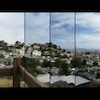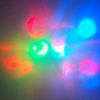I wrote this post for the KQED MindShift blog about time-lapse photography. It gives a brief overview of the technique, and some resources for getting started:
Time-lapse is a photographic technique that allows us to tune into events that normally unfold at a pace too slowly to observe directly: the movement of clouds, the rising and setting of the sun, or the incremental growth of plant life.
Whether you’re a science teacher, a parent or kid interested in photography, or someone who just wants to learn something new, time lapse is a great way to observe the world from a different vantage point.
The technique entails shooting images at regular intervals, then playing them back to create a moving image. In this sense it’s like shooting a film or video. The difference is that with traditional film and video, images are captured at the same rate they’re played back (e.g., at 24 frames per second), whereas with time-lapse, the images are captured at a much slower rate–in other words, at a much longer interval between shots. When these images are played back at typical video frame rates, it looks like fast-forwarded reality.








